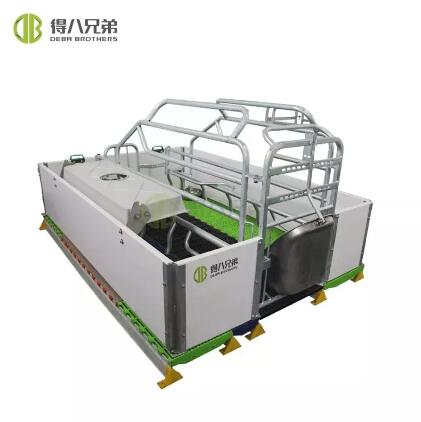Maintaining Hygiene Excellence: Protocols and Maintenance for European-Style Farrowing Crates
2024-02-22
In the intricate world of pig farming, maintaining impeccable hygiene is paramount for the health and well-being of sows and piglets. European-style farrowing crates, renowned for their focus on animal welfare and productivity, require meticulous hygiene protocols and maintenance to ensure optimal conditions for farrowing and nursing. In this blog post, we'll delve into the hygiene protocols and maintenance requirements specific to European-style farrowing crates, highlighting best practices to uphold cleanliness, biosecurity, and sow comfort.
Hygiene Protocols for European-Style Farrowing Crates
1. Daily Cleaning: Implement a daily cleaning routine to remove organic matter, waste, and debris from farrowing crates. Use a mild detergent or disinfectant approved for use in animal facilities to sanitize surfaces thoroughly.
2. Bedding Management: Replace bedding material, such as straw or shavings, regularly to maintain a clean and comfortable nesting environment for sows. Remove soiled bedding promptly to prevent the buildup of bacteria and pathogens.
3. Sanitation of Equipment: Clean and sanitize all equipment used in farrowing crate management, including feeders, waterers, and enrichment devices. Regular disinfection helps prevent the spread of diseases and ensures the health and safety of sows and piglets.
4. Ventilation System Maintenance: Regularly inspect and clean ventilation systems, including fans, vents, and air filters, to ensure optimal airflow and air quality within the farrowing facility. Replace filters as needed and address any issues promptly to prevent respiratory issues in sows and piglets.
5. Biosecurity Measures: Implement strict biosecurity measures to minimize the risk of disease introduction and transmission. Restrict access to farrowing areas, use dedicated footwear and clothing for farm personnel, and implement protocols for visitors to minimize the risk of contamination.
Maintenance Requirements for European-Style Farrowing Crates
1. Inspect Structural Integrity: Regularly inspect farrowing crates for signs of wear, damage, or corrosion. Check welds, joints, and hardware for integrity and stability, and address any issues promptly to prevent structural failure or injury to sows and piglets.
2. Repair and Replacement: Promptly repair or replace damaged or worn components of farrowing crates, such as flooring, gates, and rails. Ensure that all parts are in good condition to provide a safe and comfortable environment for sows and piglets.
3. Adjustable Features: Take advantage of adjustable features, such as rails and gates, to accommodate the specific needs of individual sows. Regularly adjust crate dimensions as needed to ensure a snug and secure fit for each sow, minimizing the risk of confinement-related stress and injuries.
4. Monitor Temperature and Humidity: Continuously monitor temperature and humidity levels within the farrowing facility to ensure optimal conditions for sow comfort and piglet health. Adjust heating and ventilation systems as needed to maintain a comfortable and stable environment.
Conclusion: Upholding Hygiene Excellence
In conclusion, maintaining hygiene protocols and fulfilling maintenance requirements are essential for preserving the cleanliness, biosecurity, and functionality of European-style farrowing crates. By implementing daily cleaning routines, adhering to biosecurity measures, and conducting regular inspections and repairs, farmers can uphold hygiene excellence and create a conducive environment for farrowing and nursing. As stewards of animal welfare and productivity, pig farmers play a critical role in ensuring the health and well-being of sows and piglets through meticulous hygiene management and maintenance practices.



